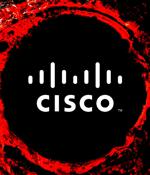Security News

Microsoft has whipped out the rebranding team once more, and chosen the name "Entra" as a catch-all for the company's identity and access capabilities. Sadly nothing to do with the sometimes-missed Encarta, the encyclopaedia launched by Microsoft back in the 1990s and eventually killed off in the first decade of the twenty-first century, Entra is not so much about squinting at postage stamp-sized bits of video and more about Azure Active Directory and Cloud Infrastructure Entitlement Management.

Calling TA410 an umbrella group comprised of three teams dubbed FlowingFrog, LookingFrog and JollyFrog, Slovak cybersecurity firm ESET assessed that "These subgroups operate somewhat independently, but that they may share intelligence requirements, an access team that runs their spear-phishing campaigns, and also the team that deploys network infrastructure." TA410 - said to share behavioral and tooling overlaps with APT10 - has a history of targeting U.S-based organizations in the utilities sector as well as diplomatic entities in the Middle East and Africa.

Networking equipment maker Cisco has released security updates to address three high-severity vulnerabilities in its products that could be exploited to cause a denial-of-service condition and take control of affected systems. The first of the three flaws, CVE-2022-20783, affects Cisco TelePresence Collaboration Endpoint Software and Cisco RoomOS Software, and stems from a lack of proper input validation, allowing an unauthenticated, remote attacker to send specially crafted traffic to the devices.

Cisco has released security updates to address a high severity vulnerability in the Cisco Umbrella Virtual Appliance, allowing unauthenticated attackers to steal admin credentials remotely.Fraser Hess of Pinnacol Assurance found the flaw in the key-based SSH authentication mechanism of Cisco Umbrella VA. Cisco Umbrella, a cloud-delivered security service used by over 24,000 organizations as DNS‑layer security against phishing, malware, and ransomware attacks, uses these on-premise virtual machines as conditional DNS forwarders that record, encrypt, and authenticate DNS data.